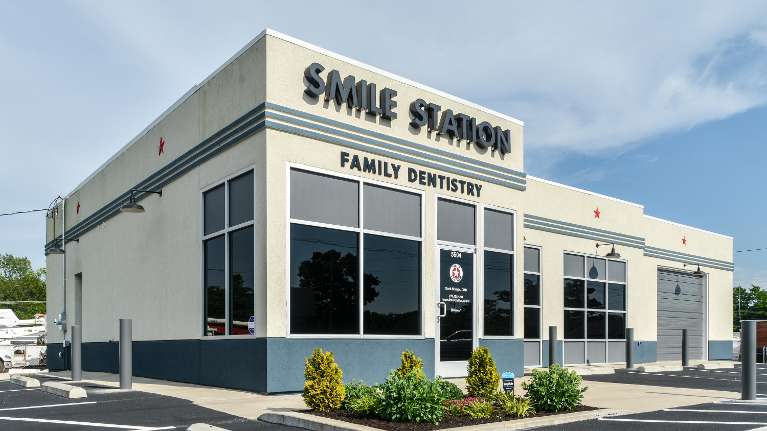Dental implants have revolutionized restorative dentistry by providing durable, functional replacements for missing teeth. In Paducah, Kentucky and the greater McCracken County region, more residents are choosing dental implants as a long-term solution for tooth loss. However, understanding the different implant types—and how anatomy, bone density, and overall health influence each option—is crucial to successful outcomes.
This article builds on the foundational overview in Understanding Dental Implants in Paducah, Kentucky — Function, Options, and Care. It explores the three main types of dental implants recognized by the American Dental Association (ADA)—Endosteal, Subperiosteal, and Zygomatic—supported by peer-reviewed data and local insights.
Why Understanding Implant Types Matters
The type of implant used affects not only aesthetics and comfort but also the long-term success of treatment. The National Institute of Dental and Craniofacial Research (NIDCR) reports that approximately 26% of U.S. adults aged 65 and older have lost all their natural teeth. In Kentucky, the rate is even higher—about 33% according to the CDC’s Behavioral Risk Factor Surveillance System. These statistics highlight the importance of patient-specific implant planning, especially in Western Kentucky where bone density variations are common in aging populations.
Endosteal Implants — The Most Common Type
Endosteal implants are the most frequently placed and well-researched category. They are inserted directly into the jawbone and serve as artificial roots for single crowns, bridges, or overdentures. These are typically made of titanium alloy (Ti-6Al-4V), known for biocompatibility and osseointegration.
“When properly planned and maintained, dental implants demonstrate survival rates exceeding 95% at ten years.” — Journal of the American Dental Association (JADA, 2022)
In Paducah and surrounding communities like Lone Oak and Benton, endosteal implants are ideal for patients with healthy jawbone volume. Advanced digital planning with CBCT imaging and guided surgery improves accuracy and reduces risk of nerve or sinus complications.
Subperiosteal Implants — For Low Bone Density
Subperiosteal implants rest on top of the jawbone but beneath the gum tissue, supported by a custom-fitted titanium frame. They are often used when bone resorption has occurred and the patient cannot undergo grafting. The framework supports multiple abutments extending through the gum line, allowing for secure attachment of prosthetics without drilling into bone.
This approach is particularly beneficial for older adults in Reidland or Hendron who may have reduced bone volume or systemic conditions limiting grafting. Using CAD/CAM design and 3D scanning, the prosthesis can be digitally tailored to fit the contours of the mandible or maxilla with sub-millimeter precision.
Zygomatic Implants — Anchoring Beyond the Jaw
Zygomatic implants represent a more advanced option used in cases of severe upper-jaw bone loss. These longer implants are anchored into the zygomatic bone (cheekbone) rather than the maxilla, providing a stable foundation where traditional implants are not viable.
Though technically demanding, zygomatic systems have shown long-term survival rates between 93–96% (PubMed, 2021). Their use is typically limited to specialized surgical settings with advanced imaging capabilities such as CBCT and intra-operative navigation.
Implant Materials — Titanium vs. Zirconia
The two most common materials used in modern implantology are Titanium and Zirconia. Titanium remains the industry standard due to its proven osseointegration, while zirconia offers an aesthetic, metal-free alternative with increasing clinical validation.
| Material | Key Advantage | Potential Limitation | Ideal Use |
|---|---|---|---|
| Titanium Alloy (Ti-6Al-4V) | High biocompatibility and bone fusion | May cause dark show-through in thin gums | Posterior and high-load regions |
| Zirconia (Y-TZP) | Aesthetic, corrosion-resistant, hypoallergenic | Less flexural strength; fewer long-term studies | Anterior or metal-sensitive cases |
Success Rates and Healing Time Comparison
Healing and integration vary by implant type, surgical technique, and patient factors. The following table summarizes average outcomes based on data compiled from ADA and NIH clinical reviews:
| Implant Type | Avg. Success Rate | Typical Healing Period | Bone Requirement |
|---|---|---|---|
| Endosteal | 95–98% | 3–6 months | Moderate to high |
| Subperiosteal | 80–85% | 4–6 months | Minimal |
| Zygomatic | 93–96% | 6–8 months | Severe bone loss cases only |
Local Considerations — Implant Dentistry in Western Kentucky
The Paducah dental community serves diverse needs across McCracken, Marshall, and Graves Counties. Proximity to regional specialists in oral surgery and prosthodontics allows coordinated planning for complex implant cases. Local data suggest higher rates of periodontal disease and tooth loss among adults aged 55+ in this region, underscoring the importance of preventive care and bone preservation strategies.
Clinics utilizing 3D imaging, guided implant placement, and early disease detection tools are helping reduce implant failure rates associated with peri-implantitis. This integration of technology and education reflects Kentucky’s gradual shift toward evidence-based, patient-centered oral healthcare.
Key Takeaways (TL;DR)
- Endosteal implants remain the gold standard with success rates above 95%.
- Subperiosteal implants help patients with limited bone density avoid grafting.
- Zygomatic implants offer advanced reconstruction for severe maxillary loss.
- Paducah and Western Kentucky residents benefit from local access to digital and surgical implant technology.
- Following ADA and AAP guidelines ensures long-term osseointegration and oral health stability.
Sources
About the Author
Dr. Scott Bridges, DMD is a general and cosmetic dentist at Smile Station Dental Care in Paducah, Kentucky, with more than 20 years of experience providing family, cosmetic, and restorative dentistry across Western Kentucky. A graduate of the University of Kentucky College of Dentistry, Dr. Bridges is a member of the American Dental Association (ADA), Kentucky Dental Association (KDA), and Academy of General Dentistry (AGD). His approach emphasizes evidence-based care, patient comfort, and education to support lifelong oral health.



